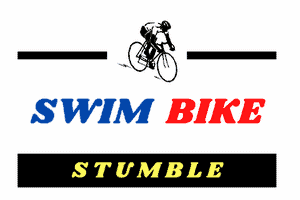Whether you are a runner, cyclist or triathlete looking for a change of pace or preparing for an off-road race, mountain biking is great addition to your outdoor activities and the off season is a great time to try it out.
Getting out on the mountain bike offer several advantages. You get new scenery, meet new people, learn new skills, and get a great interval workout. Finally mountain biking is much more cold weather friendly than road biking. I recently went on a mountain bike ride with a starting temperature of 34 F and it wasn’t bad at all. Road biking below 35 degrees is a non-starter for me.
Getting a Mountain Bike
The first step is to get a mountain bike. So head over to your local bike shop (LBS) and talk to them about what you’re up to and ask them for advice on your options. I consulted with Dave Qureshi, at Speedshop Bicycles, Anderson, SC. for information for this post. As usual it boils down to price, performance and the type of riding you want to do.
Your first question will probably whether to go hardtail or full suspension. Hardtail prices range from $500 to $1,200. Full suspension bike prices go from $1,500 to $2,400. Hardtails are cheaper, lighter and have a bit more acceleration but take a toll on rougher terrain. Full suspension bike cost more, are more versatile, cost more and require a bit more maintenance.
As far as features to look for in a mountain bike include an air adjustable front fork, hydraulic disc brakes. As far as gearing 1 x chainrings are becoming the standard.
Mountain Bike Gear
Dave points out that you will need some additional gear for mountain biking. You will need repair supplies including a spare tube, tire levers, CO2 cylinder with adapter or mini-pump, a master link and bike multi-tool with chain breaker. You can get by for awhile using some of your current gear and can make due with a water bottle and cage for short rides. Eventually you will most likely want a mountain bike specific helmet, full finger gloves, and a pack with hydration bladder. Depending on whether you decide to go flat pedal or clip in, shoes, cleats and pedals are another consideration.
Learning to Ride
Mountain biking has its own skillset and maneuvers. To flatten the learning curve try watching some of the excellent mountain biking YouTube videos, practice in your backyard, go on some group rides so you can see how other riders handle obstacles. Finally Dave strongly recommends finding a buddy who is close to the same skill level as you to ride with.
“You benefit from riding with someone at about the same skill level,” he said. “If something goes wrong they will be on the trail with you not at the parking lot wondering what’s keeping you.”
As for skills to practice Dave recommends you start with the trackstand and then move to the wheelie, manual and bunny hop.
One final thought, after my mountain bike ride last Saturday my friend Suzanne had an interesting suggestion. After each mountain bike ride – especially if you are a novice – make a few notes. Write down what you liked about the ride and write down where you think you need work. For me last Saturday I was surprised at how well my 2016 Marin Rift Zone 5 29er can handle drops and climbs if I stay off the brakes and make the most of my momentum. I discovered, or actually Suzanne discovered, I had my front fork locked out which made climbing a bit harder. And I am still working on getting through tight switchbacks.
Videos
More on cornering skills
Links:
Hardtail versus full suspension bikes – Redbull
Hardtail vs Full Suspension Mountain Bikes – Singletracks
8 MUST-HAVE MOUNTAIN BIKING GEAR FOR BEGINNERS
Winter mountain biking: what to wear, where to ride and how to set up your bike




